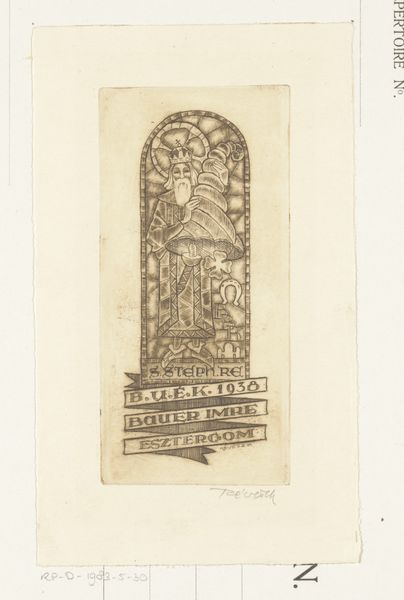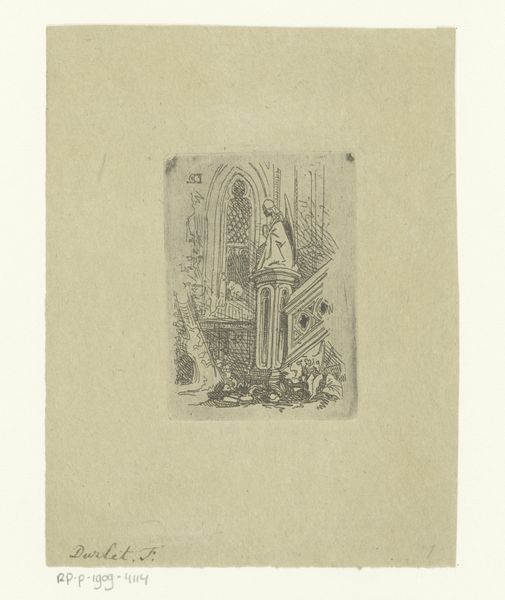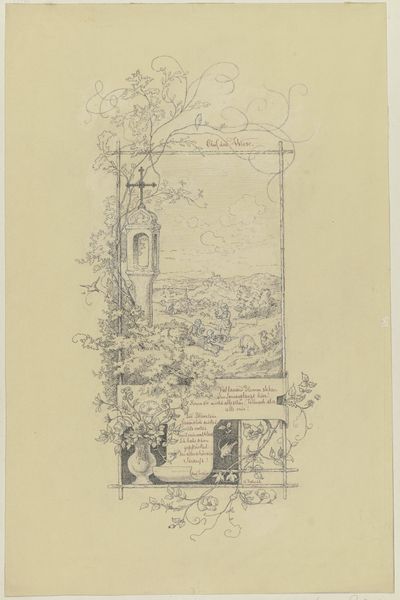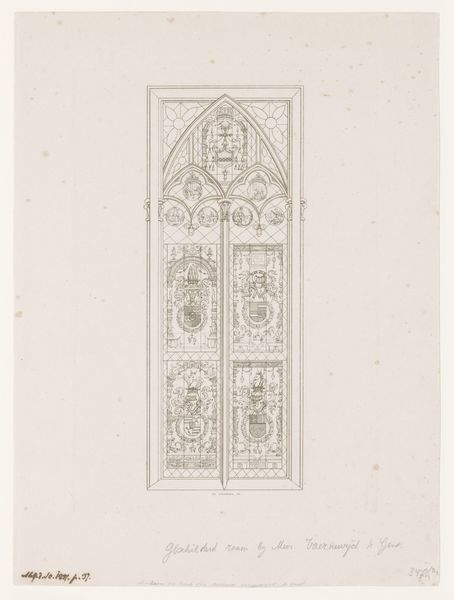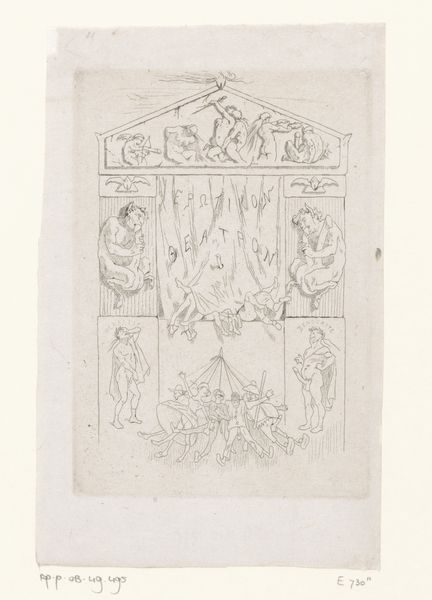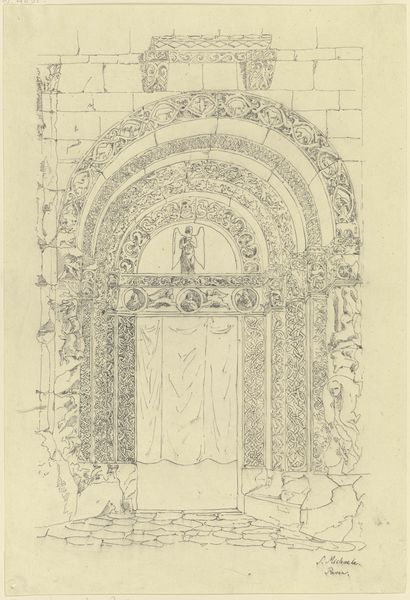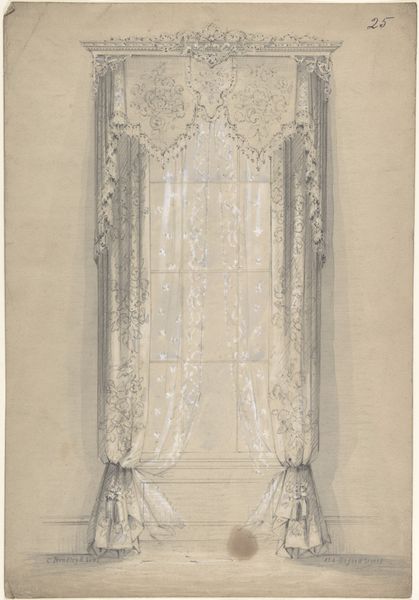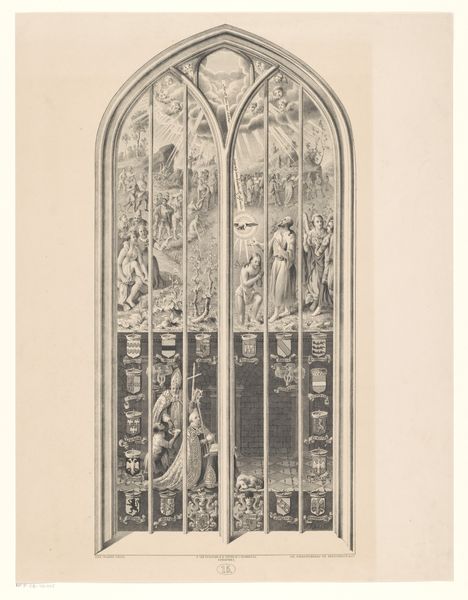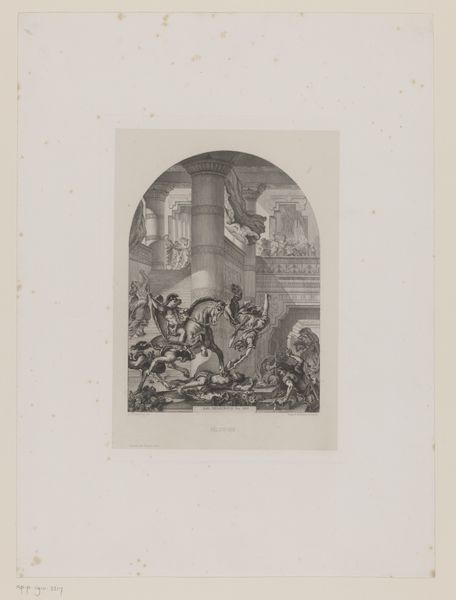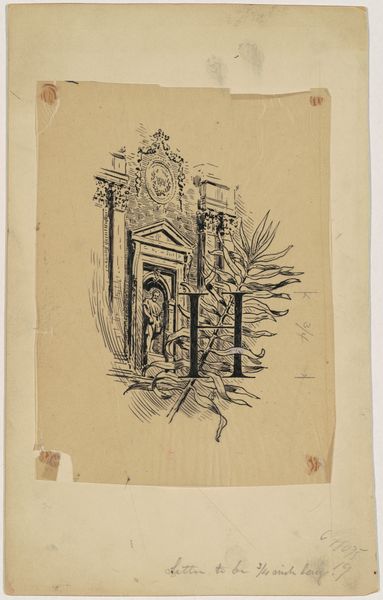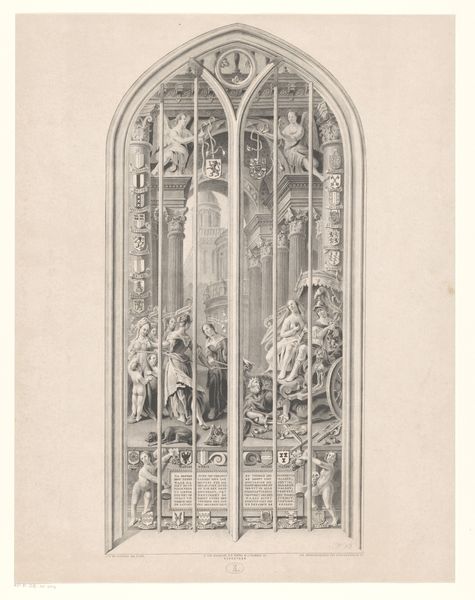
Dimensions: height 148 mm, width 77 mm, height 190 mm, width 112 mm
Copyright: Rijks Museum: Open Domain
Curator: We're looking at a 1940 etching by Kornél Révész, titled "Nieuwjaarswens van Kornél Révész"—A New Year's Wish. It's a print on paper. Editor: It has the subtle charm of a greeting card, but with an ominous edge, wouldn't you say? The muted tones of the etching style seem almost haunted, and yet… also strangely hopeful. Curator: It’s interesting that you say ominous. Given the context of 1940, the imagery is rather loaded. You have an imp-like figure emerging from between a pair of ornately decorated, and slightly ajar, doors. “19” is inscribed on the left side, "41" on the right. The inscription translates to, "Révész Kornél wishes you a peaceful New Year!” Editor: Peaceful indeed. There’s a dark irony there, isn't there? The doors themselves—they almost appear like prison gates. Perhaps opening a door to peace seems more than a little grim under those circumstances. That imp is trying very hard to cheer us on, despite everything. I find that strangely touching. Curator: The doors themselves are quite ornate. It's symbolic, playing with light and shadow. I suspect it represents the transition between the old year and the new—a very uncertain future. You’ve got to consider the role of art and artists when direct political expression was often repressed. Editor: Ah, that makes perfect sense. These images can hold layered meanings—the sort that offers solace on the one hand but subtly undermine narratives of control on the other. Look at the fringe under the doors, like some bizarrely ominous tinsel! It subverts any kind of conventional festivity. I imagine the effect of something like this was quite radical when it was made. Curator: Perhaps less "radical" than a quiet subversion. It gives people a shared, yet coded language with which to share hope, anxiety, and humor, to build resilience within an atmosphere of state oppression. The beauty of symbols! Editor: Right. It’s a delicate dance. In a world that seems increasingly fractured and unstable, looking back at Révész's piece, that imp, that ambiguous space between one year and another— it all resonates deeply. Curator: It does. Thank you for those perceptive observations. It just underscores how historical context transforms what would otherwise appear like innocuous sentiments into something altogether potent and relevant.
Comments
No comments
Be the first to comment and join the conversation on the ultimate creative platform.
